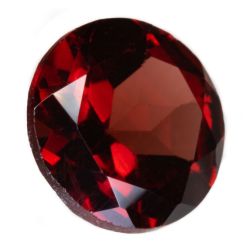Tanzanite: The Queen of Kilimanjaro

In my last blog, I talked a little about tsavorite, one of the rarest gemstones on Earth, mined in only a small corner of Kenya and Tanzania. Tanzanite is another rare beauty from East Africa, perhaps even rarer than tsavorite. If you’re looking for tanzanite, you’ll find it only in an eight-square-kilometer region that lies in the shadow of Mount Kilimanjaro.
History
Before he discovered tsavorite, Campbell Bridges came across some blue-violet gemstones for sale at bazaars in Tanzania. Though how long the locals had known about this stone is unknown, Ali Juuyawatu, Masai tribesman, is credited with its discovery. Bridges is responsible for helping create a market for the dazzling new stone, bringing as many rough tanzanite gemstones as he could to the United States.
Bridges worked with Tiffany & Co. as a consultant. As with tsavorite, tanzanite’s discovery was a big deal. It was the first new blue gemstone to be discovered in millennia. But Tiffany’s executives weren’t too thrilled with the name “zoisite,” In a stroke of marketing genius, they renamed it for the country in which it was discovered and advertised it as a gemstone only available in Tanzania and Tiffany’s. Their ad campaigns focused on its rarity and its limited supplies, the fact that it was a brand new discovery, and its shade of blue not found anywhere else.
But they went further than that, creating educational materials for jewelers that helped them understand the stone and describe it to customers, creating industry-wide messaging and a brand identity for this new gemstone. These efforts made tanzanite a household name. It even became an alternative birthstone for December.
 TANZANITE STUDS BY ELLIE THOMPSON
TANZANITE STUDS BY ELLIE THOMPSON
Why is Tanzanite So Rare?
While tanzanite is mined only in one place in the world, zoisite, the mineral group to which it belongs, is found all over the world in various forms. In its natural state, tanzanite often appears brown, yellow, or green, with hints of blue or purple. When zoisite is treated with heat, it turns violet, and can look just like tanzanite. Rough tanzanite, as well, is often heat-treated at 600*C (1100*F) to give it that vivid shade of blue associated with the gemstone.
Zoisite forms large crystals in metamorphic rock. This is why it is found in places with volcanic activity, such as Tanzania, Norway, and the state of Washington, and in mountains formed by landmasses smashing into each other, creating pressure high enough to melt rock, such as the Alps and the Himalayas.
What makes tanzanite different from other types of zoisite is the presence of vanadium, which gives it its blue hue, and the particular geological circumstances that led to the formation of Mount Kilimanjaro and the same geological processes that make tsavorite so rare. Tanzanite is found in the folds of rock below Mount Kilimanjaro that cooled during the mountain-building process.
Tanzanite is also unique in that it exhibits a phenomenon known as trichroism. Depending on the direction from which it is viewed, the rough form of tanzanite can appear to be three different colors ranging from red to green to blue to violet. Cutters take advantage of this phenomenon to cut gemstones of different colors.
But we are also seeing many varieties of untreated zoisite on the market today. Ayolite, also called ruby zoisite, is bright green with ruby to pink inclusions, not unlike watermelon tourmaline. Another variety of zoisite called thulite appears in intriguing shades of coral, lavender, pink, plum, and burgundy. Zoisite also appears in a wide range of green and yellow shades. I really enjoy using all shades of zoisite in my work, especially blending multiple colored gemstones together within a piece. These vivid, unique colors always inspire new and creative design ideas.

Cascade Earrings - Indigo/Violet Array
A Rare Yet Affordable Treasure
Since there is only one tanzanite mine in the world, supplies of this gem are going to run out at some point. When it was first brought to market, it was called “the gemstone of a generation” because it was believed that supplies would be depleted within 30 years. Gemstones are a nonrenewable resource: once they’re all out of the ground, that’s all we’re ever going to get. It takes nature billions of years to arrange the right atoms in the right structure under the right conditions of heat and pressure, but it will only take us a few thousand years to deplete the world’s supplies of precious metals and stones. The not-so-abundant supply of these precious resources is made abundantly clear by the fact that our one tanzanite mine is almost empty. But the Tanzanian government is tightly controlling the output of that mine, so the mine may remain productive for another 20 years or so.
Despite its scarcity, it is still an affordable gemstone for anyone looking for something unique—and an affordable alternative to lovers of violet-blue sapphires. Now is the time to get your hands on a piece of tanzanite jewelry, because once the mines are depleted, prices are sure to rise.
 Hanging Garden Earrings
Hanging Garden Earrings








